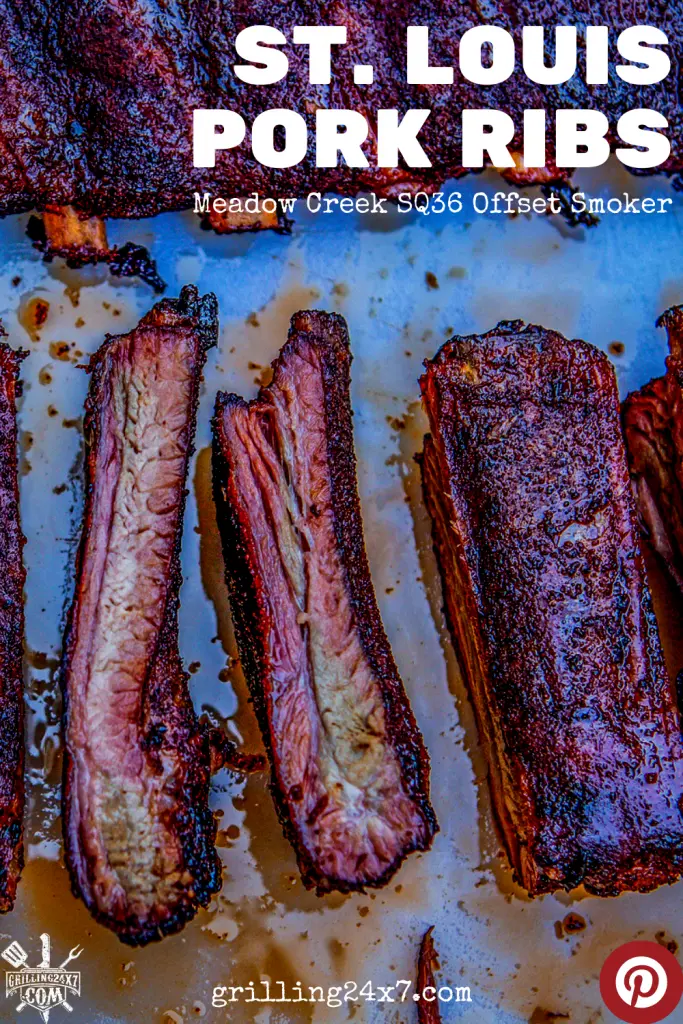
Smoked St. Louis Ribs on a Offset Smoker
Smoked St. Louis Ribs on an offset BBQ Smoker gives you the most authentic flavorful pork ribs you've ever tasted.
This recipe is very straight forward if you're looking for that pit master taste at home.
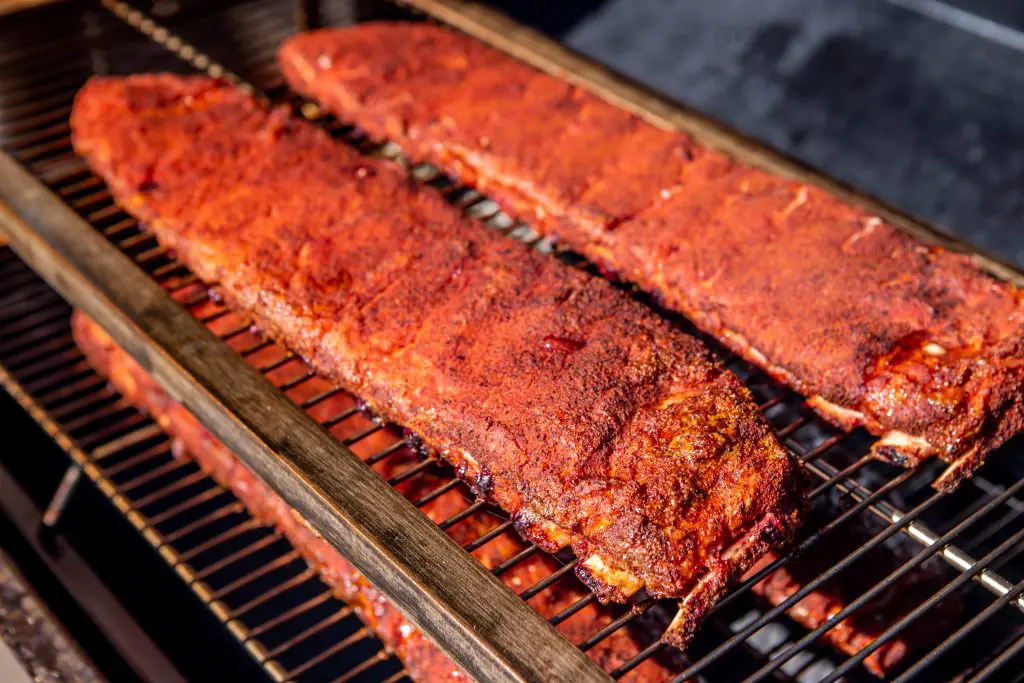
How I Prepare Smoked St. Louis Ribs
Nothing beats a rack of skillfully-cooked St. Louis pork ribs hot off the BBQ smoker.
I’m talking about tender, juicy bites of pork lightly clinging to the bone, with a delightful, chewy bark, and the perfect balance of smoke and seasoning…
The trophies of celebrity pitmasters, the variety of regional barbecue flavors, and the vast library of opinions on the internet can intimidate any beginner looking for the best place to start.
I like a recipe that gives me the best results with the least amount of hassle, and a straightforward approach usually increases the chance of success too.
In this recipe, I’m sharing a simple method that will get you great results with the fewest steps possible:
- Trim spareribs to St. Louis style ribs.
- Remove the membrane on the back.
- Season the entire surface with Meadow Creek Brisket Rub (or your favorite pork rub).
- Smoke the ribs until they are done.
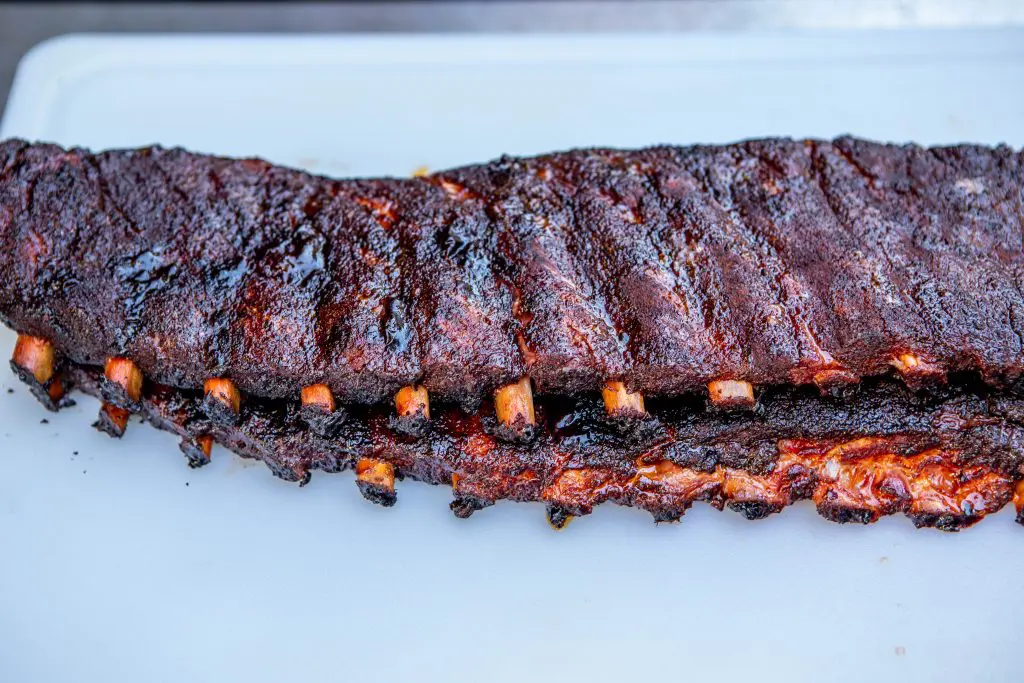
Why I Dont Wrap Smoked St. Louis Spare Ribs
Not wrapping the ribs gives the ribs a slightly chewier exterior, which I really like.
If you hit it right, they will be juicy and tender with a heavenly bark and a wood-fired flavor that perfectly complements the meat and seasonings.
This also lets the St. Louis spare ribs absorb maximum flavor whether you add sauce or enjoy them with dry rub only.
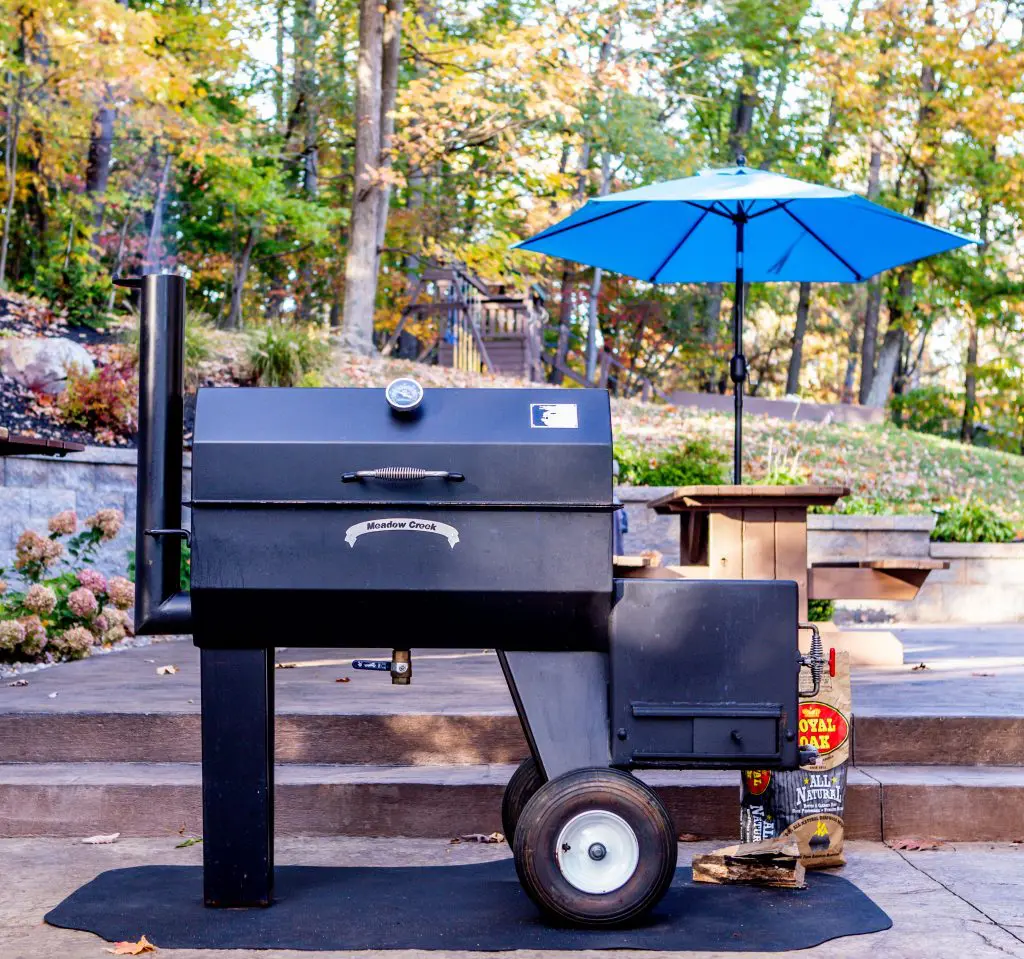
The Meadow Creek SQ36 Offset Smoker
While I enjoy simple methods in my recipes, I am not afraid of manual labor. In this story, I’m using my Meadow Creek SQ36 offset smoker, fired with 100% hardwood charcoal briquettes and hardwood log splits.
An offset smoker requires more fire management than many other types of smokers, such as the Big Green Egg, Weber “bullet” smoker, or Meadow Creek PR series smoker, but that’s not all bad.
It really depends on your expectations. In my experience, no smoker is better than an offset smoker for someone who wants direct access to the fire and the fun of tending it.
This style of cooking is certainly not for everyone, but it puts you in charge like none other does.
It’s also perfect if you want an excuse to slow down and unwind while enjoying your favorite beverage.
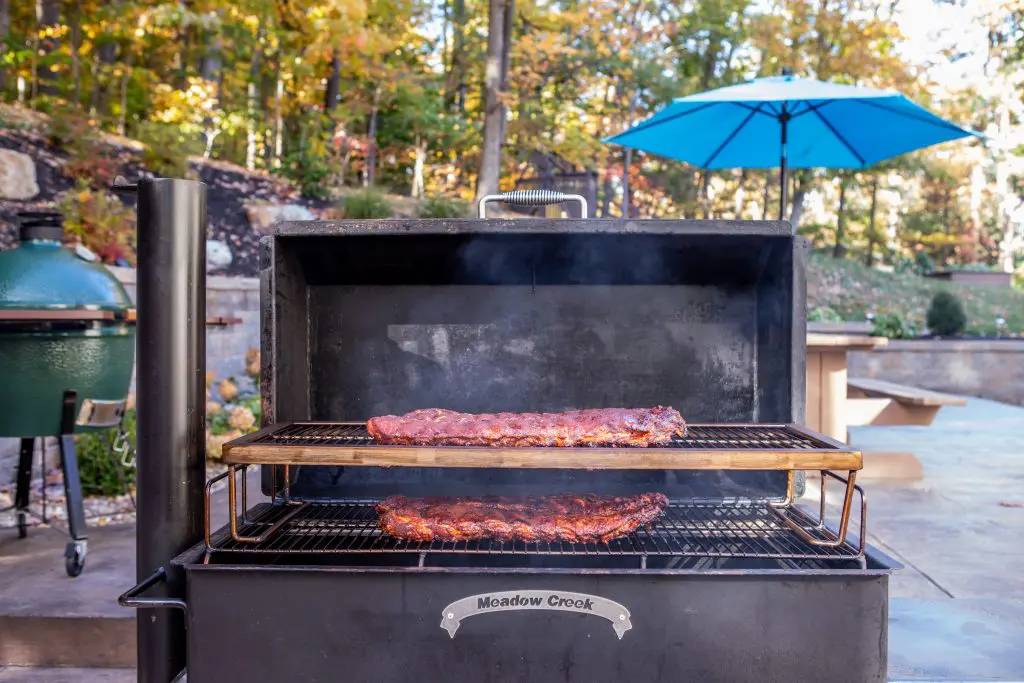
Firing the Offset Smoker
I fired the smoker with 8–9 pounds of charcoal briquettes and a stick of hardwood. Instead of keeping my smoker at one exact temperature, my philosophy is to cook within an acceptable range.
I was aiming for 225–250 degrees, but the smoker also climbed to 275 for a while. The temperature will fluctuate as the fuel burns down and is replenished, but this is normal.
In my experience, it’s best to add a new stick of wood about every 45 minutes, but I recommend adjusting the schedule as needed to maintain enough live coals to quickly light the new fuel.
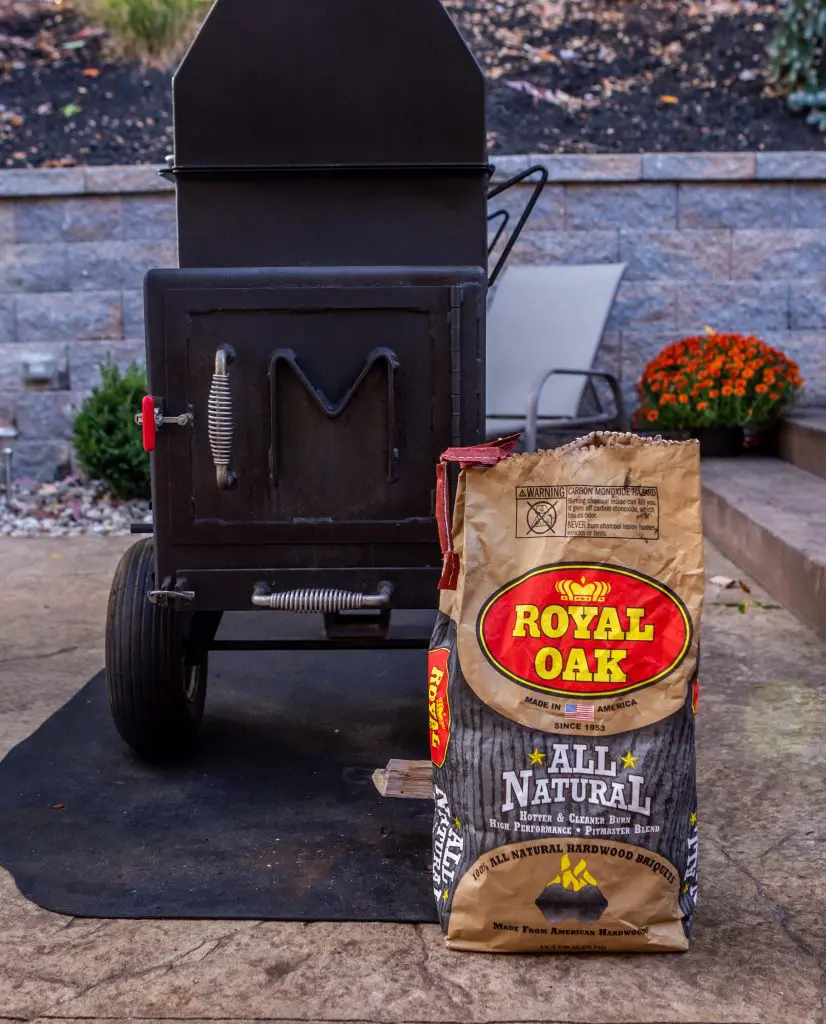
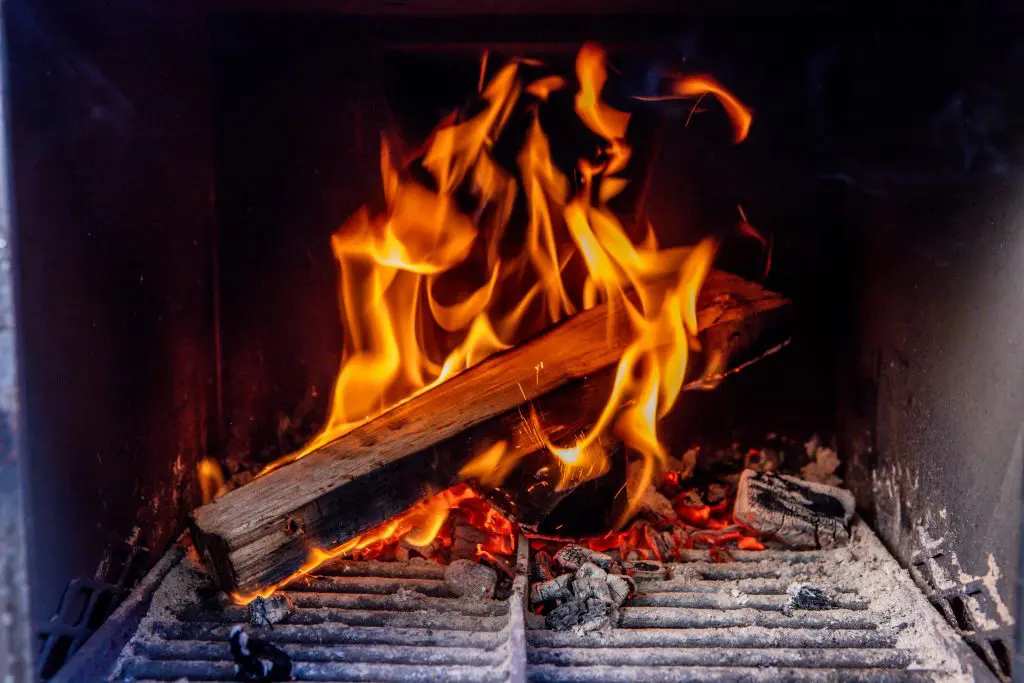
Prepping the Smoked St. Louis Ribs
In this story, I am cooking four racks of Smoked St. Louis ribs—two on the bottom rack and two on the optional second tier grate.
St. Louis ribs are spareribs cut down to a rectangle shape, with the rib tips and skirt removed.
Some stores carry St. Louis ribs, and others only have full spares or baby backs, so you may have to roll with what you have available locally.
I like to buy St. Louis spare ribs from Sam’s Club and trim them down like this:
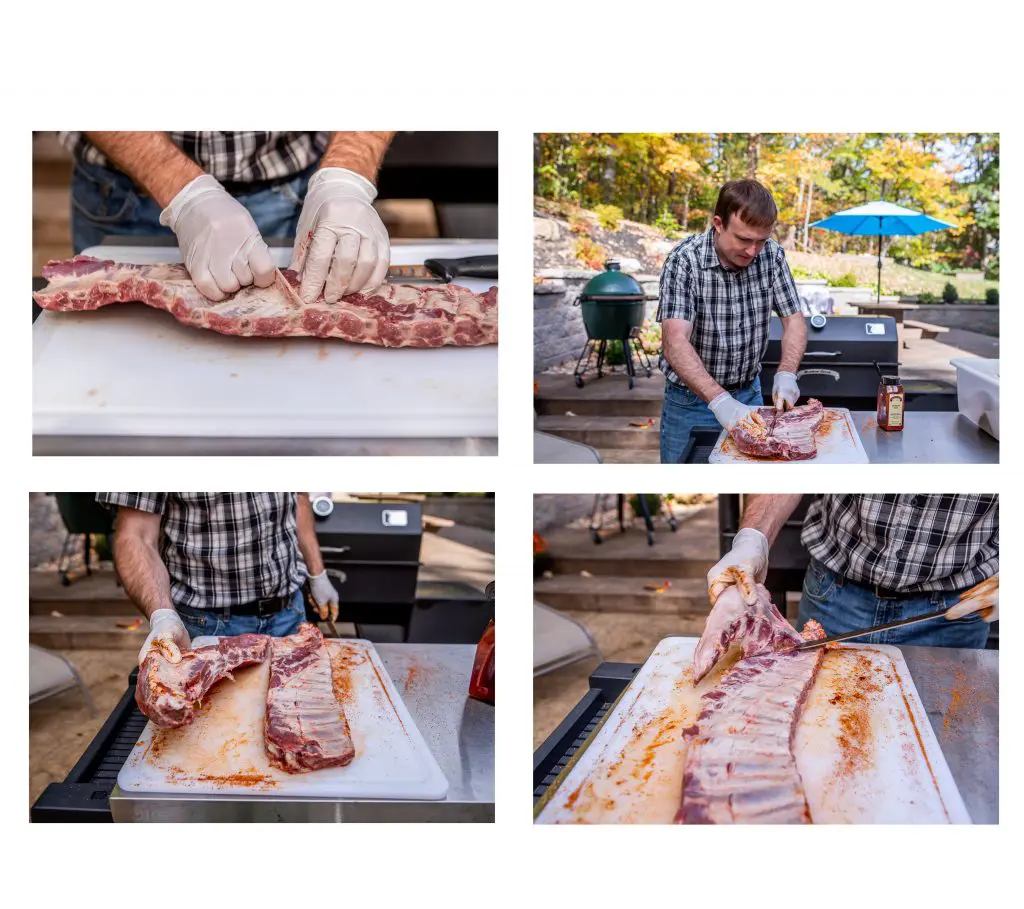
How to Trim St. Louis Spare Ribs
- Lay the rack face-down on a cutting board.
- Slice the skirt off flush with the back surface of the rack.
- On the wide end, find the edge of the bones (where they join with the rib tips). With the knife running parallel to the cut edge of the bones, cut a straight line along the full length, removing the rib tips.
- To help it cook more evenly, square the rack up the best you can. You may want to shorten the narrow end to make it wider. (The bones in the small end will not span the entire width of the rack, but that’s okay.)
- Flip it meat-side up and filet off any excess fat or extra layers of meat on the thick end of the rack.
After trimming the ribs, remove the membrane on the back of the ribs to let more smoke and seasoning contact the meat.
A dry paper towel is helpful for gripping the membrane once you get it started.Coat both sides and all the edges with the rub.
I enjoy a good balance of sugar, salt, and pepper on my pork ribs and highly recommend Meadow Creek Brisket Rub. Be careful not to over season the ribs if you’re using a really salty rub.
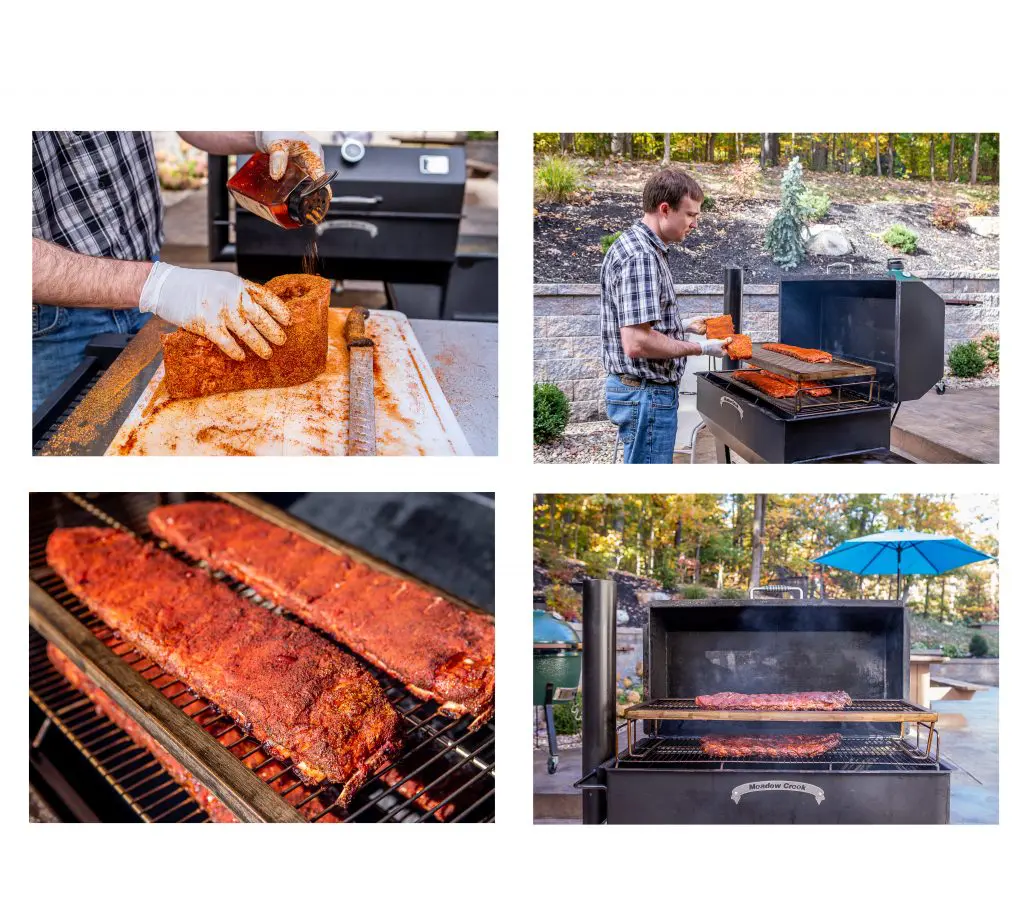
Smoking the St. Louis Ribs
This smoker usually runs a bit warmer on the main grate than on the second grate, which isn’t a problem if you anticipate it or use it to your own advantage.
For example, the ribs on the top rack were about 15 degrees behind the bottom ones; if I want to serve them all at once, I would hold the first ones in foil inside an empty chest until they are all finished.
The bottom ribs were done in only 3.5 hours, so apparently the bottom rack was running hotter than I thought it was.
Because I wanted to reheat some of the ribs for leftovers, I removed the top ones at the same time, so that I have more margin when reheating them.
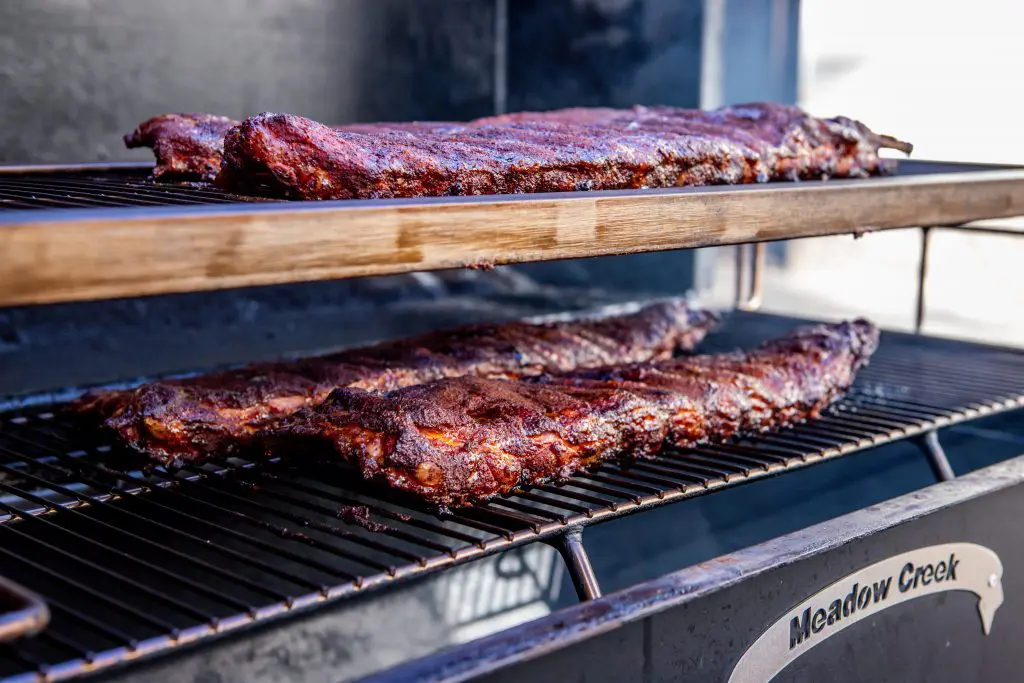
When Are The Ribs Done?
The ribs are done once they are tender. One way you can tell this is by folding the rack in half with the meat side facing outward. If the meat tears, it’s ready.
You can also probe the thickest part of the slab with an instant read thermometer. Look for an internal temperature of 190–205 degrees F. Check the ribs after about 3 hours on the smoker.
Once they are close, check them every 15 minutes to make sure you don’t overcook them.
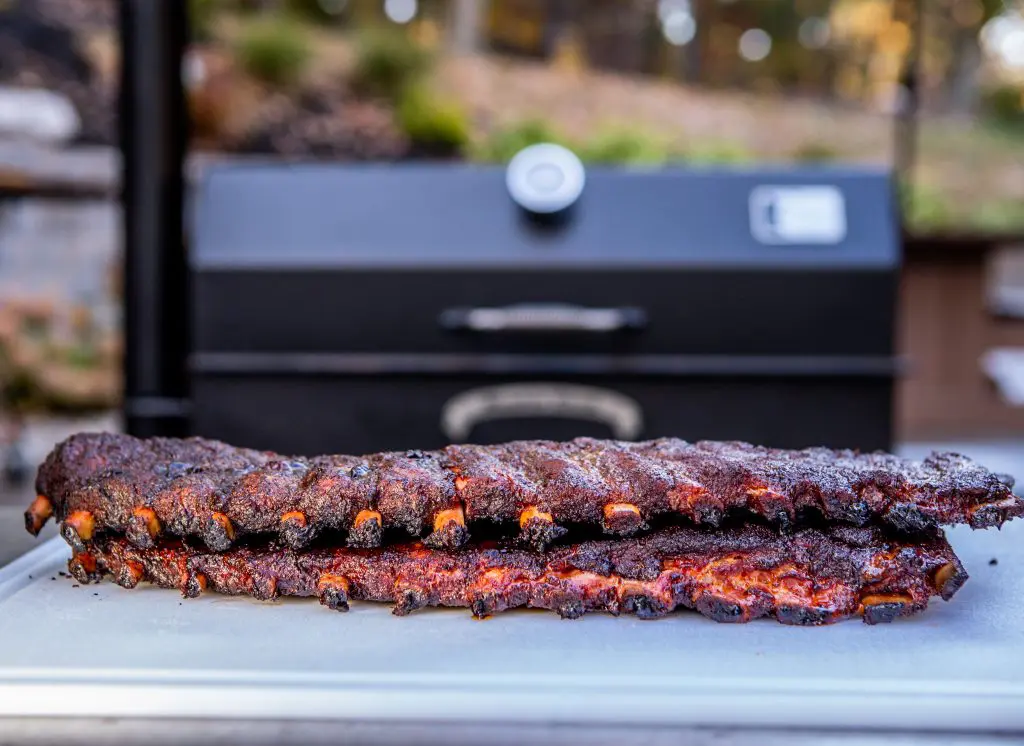
Serving St. Louis Spare Ribs
I like to slice the ribs into single-bone servings. Lay the rack bone-side up on a cutting board and slice between each bone, following the angle of the bones.
A perfectly-cooked piece of meat depends on many individual factors working in perfect harmony—without one overpowering the other.
These ribs may not have been perfect, but the juicy tenderness of the meat, the incredible bark, mild smoke flavor, and the tantalizing rub were right on target.
I hope you’ve been inspired with this simple method for delicious pork ribs and will try my recipe.
If you’re in the market for a handcrafted BBQ smoker, I invite you to check out Meadow Creek’s full line of quality offset smokers and reverse flow tank smokers and take your outdoor cooking to a new level.
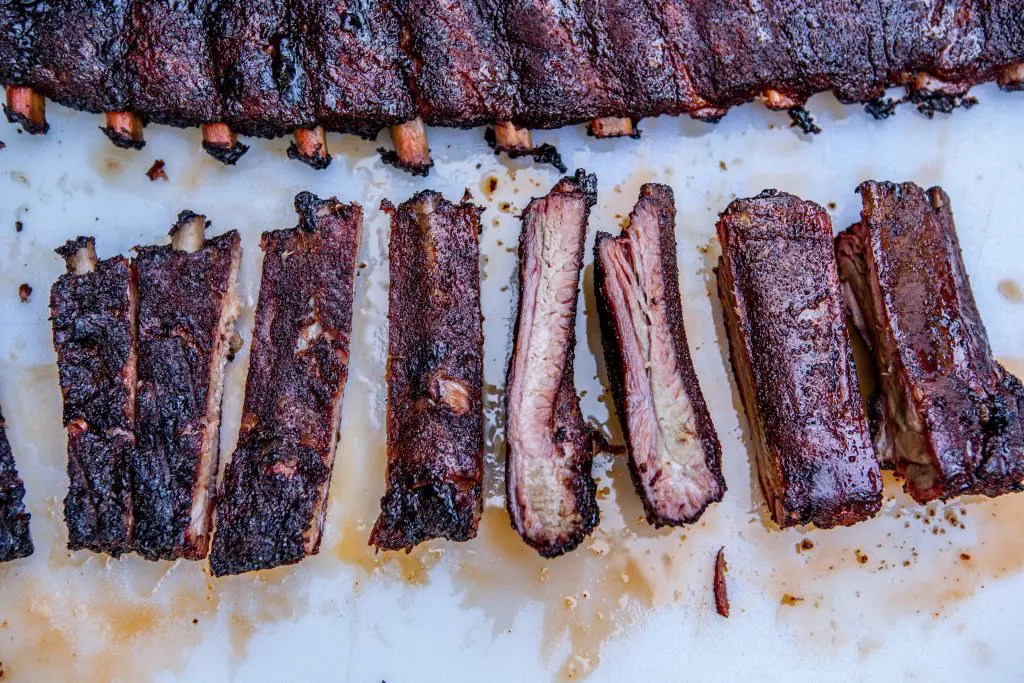
More Tasty Pork Recipes
- How to Smoke Perfect Pork Ribs for Beginners
- Sweet & Spicy Hawaiian Style Spare Ribs
- Smoked Green Chile Pork Tenderloin Fatty
- Jameson Mustard Glazed Cast Iron Pork Chops
- Southwest Smoked Pork Dip
- Bacon Burnt Ends Using Slab Bacon
- Cast Iron Cuban Casserole - Leftover Pulled Pork Recipe
Smoked St. Louis Ribs on an Offset Smoker
Equipment
- Meadow Creek SQ36 Offset Smoker
Ingredients
- 12 lbs St. Louis Ribs 4 full racks
- 6 tbsp BBQ Dry Rub
Instructions
- Light the coals on your offset Smoker and bring the temperature to between 225-250 degrees F.
- Clean and trim the spare ribs by removing the menbrane and any exsess fat on the ribs.
- Season the st. Louis ribs liberally on both sides with your favorite bbq dry rub then place on the offset smoker.
- Smoke the spare ribs for about 3-4 hours. use a probe to test for tenderness. Ribs should be tender once they have reached an internal temperature of between 190-205 Degrees F.
- Let the ribs rest for 5-10 minutes before slicing. Serve with bbq sauce on the side.
Notes
Nutrition
About the Author: Lavern is a writer and the marketing director for Meadow Creek Welding, a manufacturer of handmade BBQ smokers and grills in Lancaster County, Pennsylvania.

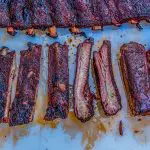
Mike
Looks awesome. I’ll try that one today
Frank Campanella
thanks, you really get fantastic bark with offset cookers